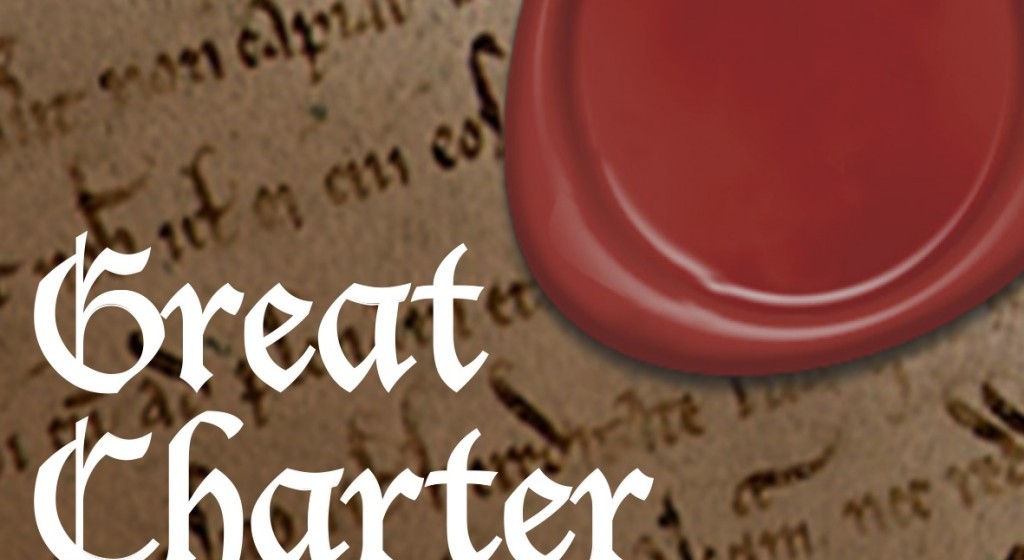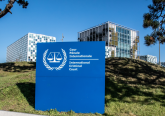That in 2015, we still commemorate an agreement between the king and the barons of England reached 800 years ago, probably on the 15th June 1215, is a cause for wonder. Magna Carta, the Great Charter, as that agreement has come to be known, is held to be a milestone in the course of western constitutional thought. Its place in English jurisprudence is secure, but, while prominent, hardly matches the reverence it is shown on the other side of the Atlantic.
Among the range of subjects covered by Magna Carta, three stand out for their constitutional importance: liberty, the rule of law and due process in the administration of justice, and taxation. On liberty: Chapters 39 is most famous in protecting liberty from arbitrary arrest and related prejudice ‘save by the law of the land’. Property rights are associated with liberty and attract various forms of protection. The rule of law, from which due process of law follows, is also the subject of Chapter 39, as well as numerous other provisions. Taxation, the power of the government to tax, which is always central to constitutional thought, appears in several chapters, of which 12 and 14, being general limitations on the taxing power, are the most important.
The anniversary has prompted a fresh round of examination of Magna Carta and its influence not only in the UK and the USA but in many other places. My purpose here is different. It is prompted by a passage from a manifesto written in July 1646 by a group of Levellers. Called Remonstrance of Many Thousand Citizens, the manifesto, addressed to the House of Commons, describes the many grievances of the common people and proposes remedies. Freedom of conscience is foremost, followed closely by equality before the law, deprecating the ability of grandees and members of the House of Commons to avoid the normal sanctions of law. Additional concerns were imprisonment for debt and being pressed-into-military service.
Instead of invoking and applying Magna Carta to the situation, as we might have expected, the manifesto takes a surprising turn:
Ye know the laws of this country are unworthy a free people., and deserve from first to last to be considered and — reduced to an agreement with common equity and right reason, — Magna Carta itself being a beggarly thing, containing many marks of intolerable bondage.
The manifesto goes on to say why Magna Carta is such a ‘beggarly thing’, why it contains marks of ‘intolerable bondage’.
The Levellers
Who are the Levellers? They appeared on the political scene in 1645 when questions were asked about the imprisonment of John Lilburne their leader for refusing to answer the charges of a parliamentary committee. Lilburne had been in trouble years before in Star Chamber for criticizing the role of the bishops in government and then refusing to recognize the legality of the court. Although he spent much of the next and last eight years of his life in and out of prison, often on order of the House of Commons, sometimes the Lords, and finally Cromwell’s Council of State, he nevertheless started a political movement which became a major source of constitutional ideas and a popular reforming movement. By 1647, with the king in captivity and the parliament discredited, the future of English government and the constitution was in jeopardy.
By 1647, with the king in captivity and the parliament discredited, the future of English government and the constitution was in jeopardy.
At first they made common cause with Oliver Cromwell and the New Model Army. They were prominent in the debates in Putney Church in 1647, an event that comes as close to being a constitutional convention as English history allows. But as Cromwell’s star rose and as he proved to be guilty of the same abuses as king and parliament before him, relations soured and the Levellers were harassed and persecuted, until by the late 1650s both Lilburne and the movement were dead.
At the time they were cast as dangerous populists who wished to overthrow the constitution and to ‘level’ society to render all equal. Neither was ever their intention. Over time they came to be presented as visionaries, harbingers of modern ideas of constitutions and constitutionalism, liberals and democrats before their time.
A beggarly thing
Why then was Magna Carta a ‘beggarly thing’, ‘a mess of pottage’? There exists an etching from 1649 that shows John Lilburne on trial for treason.[1] Treason was a capital offence, the penalty for which was the grisly fate of being hung, drawn, and quartered. Lilburne is defending himself before a specially constituted court of forty, including grandees, notables, and a dozen judges. Despite repeated requests, he is denied counsel, not told the exact charge against him (it related to a publication critical of Cromwell’s government), and is not allowed to call witnesses.
The saving grace is that there is a jury to decide guilt or innocence. Indeed, in the top right hand corner, the names of the ‘Jury of Life and Death’ are listed. Lilburne was acquitted.
Now you may presume a man, unrepresented, on trial for his life before a dubiously constituted court, would naturally turn to Magna Carta. After all, Magna Carta addresses these very issues of law and the due process of law. But laws are not the preserve of the grandees or the lawyers: nor are they just what the grandee and lawyers decide they are. The very concept of law has a deeper meaning. Laws, to be laws, must ‘be agreeable to the law Eternal and Natural — for whatsoever laws, usages, and customes, not thus qualified, are not the laws of the land’. Natural law is the key: natural law means natural reason, and natural reason is ‘invested in the breast of all men, regardless of their position in society, and ‘however mean his intellect’.
Parliamentarians have no privileged access to natural reason. Bur what is the criterion of natural reason, the guiding beacon: it is the welfare and safety of all men. It follows that laws, usages, and customs not reasonably advancing the safety and welfare of the society are not true laws.
Magna Carta, or parts of it, at first sight might seem compatible with this vision. Why then is it rejected? The clue is the words quoted above: Magna Carta ‘contains many marks of intolerable bondage’. Magna Carta emerges from a society based on the bondage of the common people to their masters. It is neither a free nor a just society.
The purpose of the Charter is to secure peace among the elite, and hence maintain and strengthen the structure of bondage, not change it.
In addition, Magna Carta had proved to be of no use in practical reality. Lilburne is on trial in a manner that violates its letter and spirit in the most blatant way. Due process of law is wholly absent. The Levellers’ point is that the very parliamentarians who were attacking the king for arbitrary practices, once in power do exactly the same. The parallels Coke drew between King Charles and King John would apply to his parliamentary colleagues.
The Levellers had a different social model to draw on: they harked back to law and society as it existed before the Conquest. Anglo-Saxon Society, in their view, was constituted by free-men who were respected as juridically equal and who were entitled to participate in the political process. It was constituted by a system of law and usage based on that sense of equal respect. Justice was administered by local courts whose judges were familiar with local customs and practices.
On the Levellers’ view, the Common Law had its origins in that society and, over centuries, developed the laws, customs, and usages that natural reason and social conditions dictated. It is only by casting-off the Norman Yoke, whose legacy continued to the seventeenth century, and restoring the essential elements of the earlier constitutional order, that law and liberty can flourish.
Lessons from Magna Carta
I will finish by asking whether there are cautionary lessons to be learnt from this case study. Does it teach us anything about constitutions as the modern equivalents of Magna Carta?
The most obvious is that constitutional standards, of which Magna Carta is an early example, depend for their efficacy on the social and political context in which they occur. While this may seem too obvious to be worth stating, it is remarkable how many contemporary constitution-makers and drafters, politicians, and international bodies, seem not to realize that declaring a standard in a text does not guarantee it will have any practical effect.
A second and related point is that standards, of the kind set by Magna Carta, require an institutional structure suitable for, capable of, and committed to, their proper implementation. In seventeenth-century England, an adequate institutional structure was absent. In the face of John Lilburne’s requests for his own counsel, the judges, eminent and experienced though they were, kept replying that they would be his counsel and that was enough. Edward Coke, the great defender of the Common Law and champion of liberty, when Attorney-General apparently had no scruples in ordering and overseeing the torture of suspects to obtain evidence. Reasons of state security trump all else, an idea still seemingly alive in parts of the Anglo-American world.
Standards, of the kind set by Magna Carta, require an institutional structure suitable for, capable of, and committed to, their proper implementation.
The final lesson of enduring importance is brought out by considering a statement by Marshall CJ in Marbury v. Madison, where he wrote:
Certainly all those who have framed written constitutions contemplate them as forming the fundamental and permanent law of the nation.
If by that he means the text is the whole constitution, the claim cannot stand. The case of the Levellers, to which numerous others could be added, shows that a constitution has deeper roots than the text and that the text has to be read and rendered in line with deeper understandings, expectations, and conventions. What was true of the seventeenth century remains so in the twenty-first century. To that we should add a final and no less salient point: the people themselves have a sense of that deeper constitution and are its guardians.
This Opinion Piece was first published on the Opinion pages of the Foundation for Law Justice and Society website, following its presentation to a meeting of the American Bar Association to mark the 800th anniversary of the signing of the Magna Carta.
[1] The etching appears on the cover of Constitutions and the Classics: Patterns of Constitutional Thought from Fortescue to Bentham (ed) D. J. Galligan (Oxford University Press: 2014)







